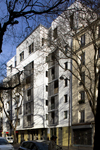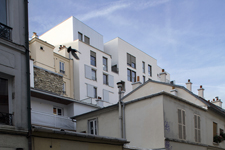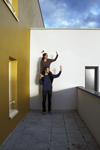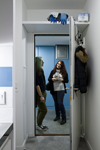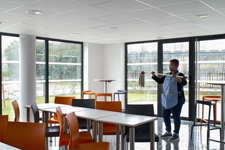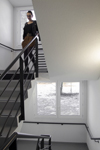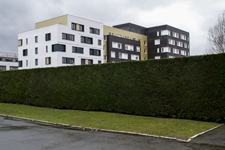HABITARE Livre paru aux éditions Archibooks
Les habitants d'ITAR : déambulation dans un petit monde d'architectures signé par l'agence ITAR
Une circulation continue des espaces privés aux parties communes. Comment les habitants passent de l'un à l'autre, se déplacent dans le bâtiment, évoluent chez eux, s'attardent dans la cour, sortent dans la rue. Les habitants deviennent les acteurs - moteurs déclencheurs du mouvement, de l'avancée, de la découverte du bâtiment. Rencontre incontrôlée avec des habitants ouverts. Qui sont-ils ? Comment habitent - ils ? Le bâtiment se détaille à chaque nouvelle ouverture de porte. Entre chaque rencontre, j'erre dans les parties communes. Après quelques jours, je glisse vers une autre adresse. Dès que j'entre dans l'édifice, je déroule une histoire, je l'interromps en quittant le lieu. Une douce et tranquille navigation chronologique s'installe d'un bâtiment à l'autre. Changement de date, changement de taille. Les bâtiments sont de plus en plus grands. Avec des similitudes de l'un à l'autre qui laissent deviner des obsessions architecturales. Comment l'agence ITAR envisage les espaces habités ? Pour trouver des éléments de réponse, je regarde comment les habitants s'approprient ces espaces.
HABITARE Book published by Archibooks editions - ITAR Architectures
Circulating in a continuous movement between private spaces and common areas inhabitants shift out of one and into the other, passing through the building, going about their activities at home, lingering in the courtyard , stepping out onto the street. The inhabitants become actors - engines triggering forward motion and the discovery of the building. Uncontrolled encounter with the open inhabitants. Who are they ? How do they occupy this space ? The building begins to reveal its details with each new open door. Between each encounter, I wander around the common areas. After a few days, I slip over to another address. As soon as I enter the building, I begin unfolding a story. I interrupt it by leaving this place. A soft and calm chronological navigation falls into place from one building to the next. Another date, another scale. The buildings are bigger and bigger. With similarities from one to the next, making it possible to ascertain architectural obsessions. How does the ITAR office envisage inhabited spaces ? I look at the way the inhabitants appropriate its spaces for answers to this question.
|
|





























